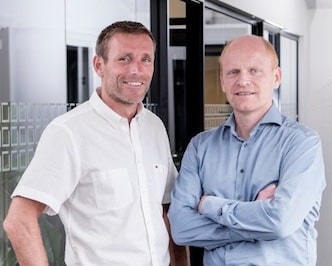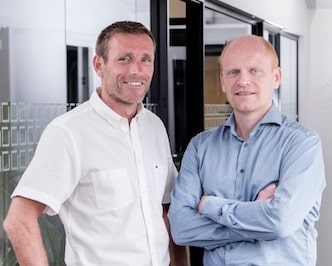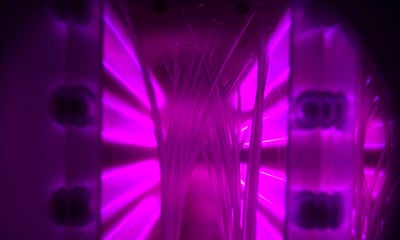The basics of corona treatment
Introducing corona treatment
Corona treatment was introduced in the industrial sector in the year 1951. An engineer in Denmark was requested to find a secure way for apposite printing on plastic surfaces.
Thus, with continuous efforts and experimentation, the engineer decided to come up with a theory that would revolutionize the world of surface treatment. The theory suggested that a high frequency beam or corona discharge would be able to treat the particular surface in a proper manner keeping the heating level in control. The success of corona treatment application led to the establishment of a surface treatment company giving way to further development of the technology.

Treats metal and plastic surfaces
Basically, corona treatment was introduced into the industrial market because of its ability to treat metal and plastic surfaces giving it adhesive properties so that any type of printing or bonding could easily take place on a variety of surfaces.
To be more precise, corona treatment is used to increase a material’s surface tension in an effective way.
By treating the material with a high frequency corona discharge, its surface becomes much more impressible to adhesives, inks and coatings.
The material that needs treatment is revealed in front of the electronic corona discharge. This results in the breakage of oxygen molecules into an atomic form. The atoms are thus allowed to bond with the molecule ends present in the material that’s being treated. Hence, the surface of that material becomes chemically active. Though, one should keep in mind the fact that a surface gone through corona treatment is likely to be debased with the passage of time unless it is coated, bounded in-line or printed on.
Debasement depends on storage conditions and the type of material that has been treated. The cost of equipment and power used in treating the surface of a material play an important part in the process. These depend on the speed, responsiveness, width, and number of sides of the material that require treatment.

Solving your adhesion problems
We have more than 40 years of experience in delivering and manufacturing quality, high-end surface treatment products for any industry.
Tantec has both standard machines, but also custom-designed machines.
Contact us today and get a quote. We are standing by to service you.
Solving your adhesion problems
We have more than 40 years of experience in delivering and manufacturing quality, high-end surface treatment products for any industry.
Tantec has both standard machines, but also custom-designed machines.
Contact us today and get a quote. We are standing by to service you.


Solving your adhesion problems
We have more than 40 years of experience in delivering and manufacturing quality, high-end surface treatment products for any industry.
Tantec has both standard machines, but also custom-designed machines.
Contact us today and get a quote. We are standing by to service you.
Corona treatment usually involves the handling of surfaces made from materials like:
- Polypropylene
- Vinyl
- Foils
- Polyethylene
- Metalized surfaces
- Paper
- PVC
- Paperboard stock
- PET
- and other such materials
If you are interested in knowing more about how to treat plastic surfaces, we recommend you read our knowledgebase article regarding that matter: Adhesion and Surface Treatment of Plastic, or simply contact our experts and get an answer directly from them: ask our experts a question.
Examples of treatable components
The equipment is installed in a place that’s aligned with the laminating, printing, or coating process. A corona treater can also be directly installed over the cast film or blown film expeller. One of the major benefits of installing a corona treater on an extruder is that new material is more impressible to the treatment.
Electrical cables, automotive components, 3D parts, medical devices, pipes tubes, board foam, domestic appliances, narrow webs (both conductive and non-conductive) and extruded profiles are just a few of the many components that are processed with corona.
These components are processed for modification before they can be used on an industrial level. The modification process involves coating, painting, sealing, laminating, sealing and labeling etc. Areas of education, automotives, research establishments, injection molding, extrusion, manufacturing of medical devices, general manufacturing, and test labs etc are more likely the ones to be using this kind of treatment.

What is corona treatment?
If you have ever faced adhesion problems in your productions, a corona treatment might be the right solution for you. A corona treatment is used to increase a material’s surface tension in an effective way. By treating the material with a high frequency corona discharge, its surface becomes much more receptive to adhesives, inks and coatings.
How does corona treatment work?
The low surface energy of certain materials often leads to poor adhesion of inks, glues, and coatings which by nature present significantly high surface energies. To obtain optimum adhesion, it is crucial that the surface energy of the base material is equal or higher than the surface energy of the substance (e.g. ink or adhesive) which is applied to it.
To increase its surface energy, the material is placed in front of an electronic corona discharge. When voltage is applied, the surrounding oxygen molecules are broken down into atoms. The generated atoms can now bond with the molecule ends present in the material that is being treated, chemically activating the surface. Surface tension increases, the surface becomes much more receptive and is now ready for further processing.
What types of materials can be treated?
Corona treatment usually involves the handling of surfaces made from materials such as:
- Polypropylene
- Vinyl
- Foils
- Polyethylene
- Metalized surfaces
- Paper
- PVC
- Paperboard stock
- PET
- and others.
We already offer specialized treatment solutions for a wide range of standard products like bottles, syringes, needles, cables, and pipes. If your product is not part of our portfolio yet, we can offer a customized solution tailored to your needs.
How long do the effects of corona treatment last?
The lifetime of a Corona treatment depends on the treated material and the storage conditions. Since the effects of a Corona treatment tend to degrade over time, the treatment is usually done shortly before the printing, coating, or bonding process begins.
Will it work for my products?
Our experts look forward to discussing your individual needs and finding the right solution for your adhesion problems. We also offer free in-house tests with your samples in our test facilities. Feel free to contact our experts or to send us a product sample.
Where should the corona treater be placed?
The equipment is usually installed in-line in a place that is aligned with the printing, coating, or bonding process. A corona treater can also be placed directly over a cast or blown film expeller. One of the major benefits of installing a corona treater on an extruder is that new material is more impressible to the treatment.
How much does it cost?
The costs of a corona treatment depend on your individual requirements. The treated material, its dimensions and responsiveness to corona treatment play the most important part in the running costs, as they determine the amount of power required. In any case, corona treatment is considered an environmentally friendly process with low operation costs. With a corona surface treatment, you also achieve great savings on adhesive materials like inks, coatings, and primer, so that your investment in a corona treater will soon pay off.
Feel free to contact our experts to discuss your individual needs and get a quotation.







